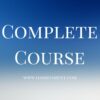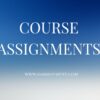Description
ENG 350 Module 1 Discussion 1
If myths are defined as truths important to a particular culture, what underlying truths or values might be described in the Iroquois and Navajo creation myths? How are the myths similar and different to the biblical creation story described in the first three chapters of Genesis?
ENG350 Module 1 Discussion 2
What problems stood in the way of the arriving Europeans living in peace and harmony with the Native American populations? What different attitudes did the explorers have toward the natives, and what were their varying purposes for writing about the New World?
ENG 350 Module 2 Discussion 1
Consider the predominantly religious perspective Puritans had toward their environment and its peoples. How do the various Puritan writers describe (using many different genres) hardship, success, loss of life, transition, community, government, family, etc. through religious means?
ENG350 Module 2 Discussion 2
Consider the poetry of Anne Bradstreet, Edward Taylor, and Michael Wigglesworth. What are their different purposes in writing poetry? How do their subject matter and poetic style differ from one another?
ENG 350 Module 4 Discussion 1
Romanticism emerged in Germany and England at the end of the 18th century. The movement came to America in the early 19th century, particularly with writers like Washington Irving, James Fenimore Cooper, and Catherine Maria Sedgwick. What characteristics of Romanticism are expressed in their writings?
ENG350 Module 4 Discussion 2
Ralph Waldo Emerson and Henry David Thoreau were on the forefront of a new movement that came to be called transcendentalism. What transcendental ideals do Emerson and Thoreau’s writings express? In what ways do their ideas differ from one another?
ENG 350 Module 5 Discussion 1
What writers present the most convincing arguments against slavery? How are their arguments formed? What evidence do they use? Why do you find these texts convincing?
ENG350 Module 5 Discussion 2
Frederick Douglass, Harriet Jacobs, William Wells Brown, and Sojourner Truth all speak from experience about the toll slavery took on the human spirit and about the resilience of that same spirit in the midst of brutal conditions. In what ways do these writers present both the damaged and the resilient human spirits of the African American population?
ENG 350 Module 6 Discussion 1
Considering readings from both module 5 and module 6, in what texts can you identify “overlap” between the abolitionist and feminist causes. What arguments are ….for both liberty and women’s rights? Why, for many women writers, did these two causes align?
ENG350 Module 6 Discussion 2
As was true of male writers, women writers were not ….in all their views. What do you see as relevant differences in the writing of the women of this period? What impediments to change did women face?
ENG 350 Module 7 Discussions 1
Consider the following themes, motifs, and symbols present within Nathaniel Hawthorne’s masterpiece The Scarlet Letter: the nature of evil, the role of sin, guilt in public versus private life, revenge, night and day, civilization and the wilderness, Pearl, the meteor, isolation and community. Select one or more of these and explain how Hawthorne draws out this theme, motif, or symbol in the novel.
ENG350 Module 7 Discussion 2
In addition to many great Romantic texts, the mid-nineteenth century saw the rise of literary criticism. Consider Poe and Melville’s critical essays. What do they think makes a good story? How do their stories “The Fall of the House of Usher,” The Black Cat,” and “Bartleby, the Scrivener” hold up under their own criteria? What makes literary criticism like this significant to the study of literature as an academic discipline?
ENG 350 Module 8 Discussion 1
Walt Whitman breaks with poetic tradition by inventing and writing in free verse. How is his poetry radically different in form, style and content from contemporary poets Henry Wadsworth Longfellow, William Cullen Bryant, John Greenleaf Whittier, and Edgar Allan Poe?
ENG350 Module 8 Discussion 2
Dickinson is famous for her short poems that also break with tradition. Her poetry experiments with form (uses dashes, often includes “off” or “slant” rhymes) and is set apart in subject matter with bold themes and startling imagery that come through compressed statements. Select one or more of Dickinson’s poems from the readings (be sure to list the first line of the poem) and explain specifically how the poem shows experimentation in form and daring subject matter. Why do you find this particular poem so interesting?


